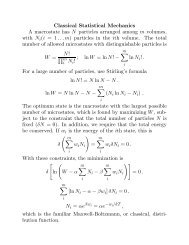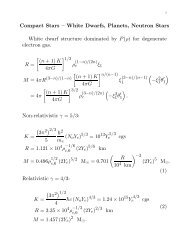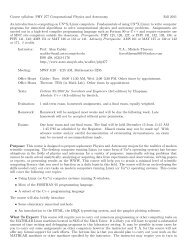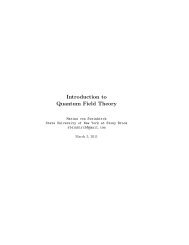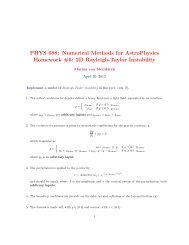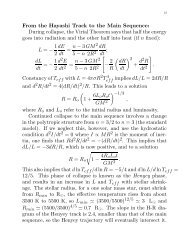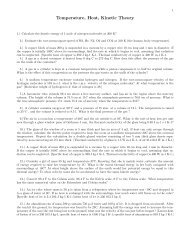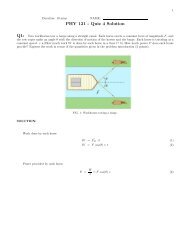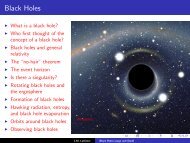sample research paper - Stony Brook Astronomy
sample research paper - Stony Brook Astronomy
sample research paper - Stony Brook Astronomy
You also want an ePaper? Increase the reach of your titles
YUMPU automatically turns print PDFs into web optimized ePapers that Google loves.
– 4 –<br />
Fig. 2.— Left: Crosses indicate selected clouds in the QIV region, which satisfy V LSR ≤<br />
−V t (l) km s −1 . Open circles show other clouds. The solid line is the adopted terminal<br />
velocity V t (l) from H I and CO observations near the Galactic plane. Taken from Ford et<br />
al. (2008). Right: The selected clouds in the QI region, which satisfy V LSR ≥ V t (l) − 0.8 km<br />
s −1 . Taken from Ford et al. (2010).<br />
the maximum expected from Galactic rotation in that direction. Clouds with significantly<br />
negative V dev are likely located far from the tangen point, i.e., very close to or very far from<br />
the Sun, but those with positive V dev are likely located very close to the tangent points. The<br />
actual volume <strong>sample</strong>d will depend on σ cc , but as long as the longitude, latitude and velocity<br />
limits are reasonably small, V dev is a reasonable measure of the cloud velocity relative to pure<br />
Galactic rotation close to the tangent points. In practice, since the channel spacing is 0.8<br />
km s −1 , the tangent point <strong>sample</strong> was taken in QI to consist of those clouds along a line of<br />
sight with velocities V LSR ≥ V t − 0.8 km s −1 . In the QIV region, the selected clouds have<br />
velocities V LSR ≤ −V t . The clouds selected in QI and QIV are shown in Fig. 2.<br />
Terminal velocities V t (l, b = 0) were taken, for QIV, from McClure-Griffiths & Dickey<br />
(2007) and Luna et al. (2006), and, for QI, from McClure-Griffiths & Dickey (2011) and<br />
Clemens (1985), and are shown in Fig. 3. The fact that the number of clouds declines steeply<br />
for |V LSR | >> V t is consistent with the cloud populations being dominated by Galactic<br />
rotation.<br />
The procedures used to detect and measure clouds are summarized in Ford et al. (2008,<br />
2010). The individual cloud properties, such as velocities, radii, and masses, can first be<br />
determined assuming they all are located at tangent points, meaning V dev can be determined<br />
for each. Errors are assigned based on estimated errors in V t . A simulated cloud population



